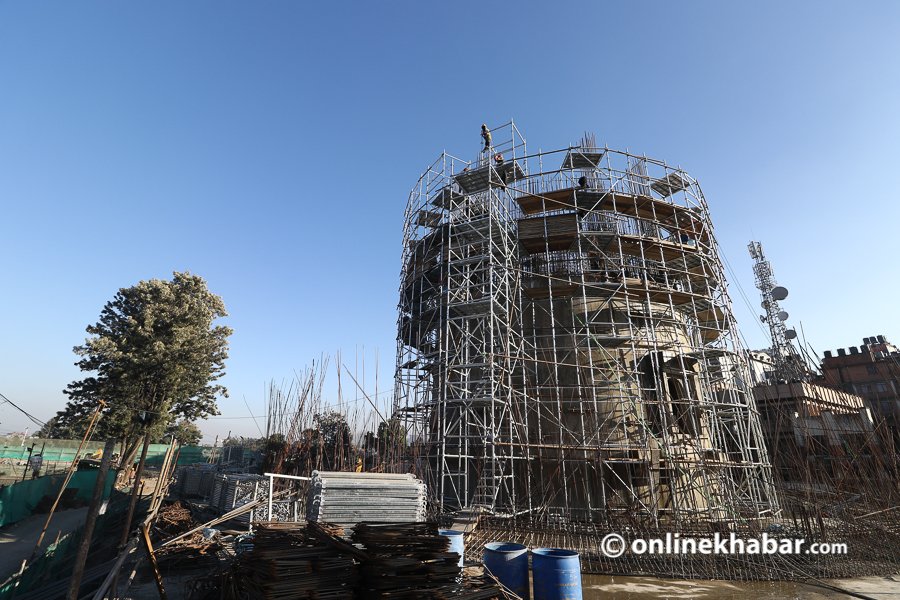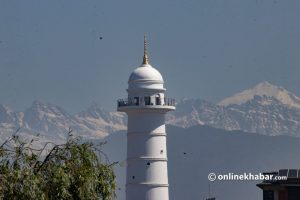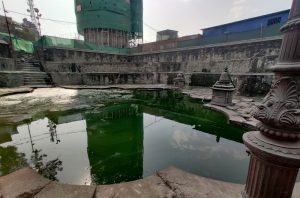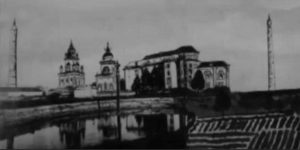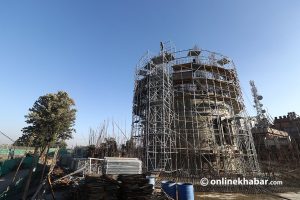Apparently, the collapse of the nine-storey Dharahara at the heart of Kathmandu was one of the biggest losses caused by the 2015 earthquake. Perhaps, that is why, in February 2016, Prime Minister KP Sharma Oli rushed to announce the ‘Mero Dharahara Ma Banauchhu’ (I will construct my Dharahara’) public fundraising campaign in February 2016 at a time when most of the heritage reconstruction activities had failed to kickstart.
Oli’s announcement raised hopes in the public. Many thought they would get back the collapsed Dharahara. An image of the old Dharahara rebuilt became the most common symbol of ‘building back better’ and ‘we shall rise again’ as you could see on graffitis and even on t-shirts.
But, as the authorities started planning, they shifted to building a “new Dharahara” instead of rebuilding the old one, and it shattered all the hopes. Moreover, heritage conservation activists found it useless because the new building could not hold any historical and cultural significance.
Now, the construction work is gaining momentum and the authorities expect to complete it soon. Five years on, the activists’ voices have gone unheard. Now, they, more loudly, say people should not mistake the new building, a view tower, for a Dharahara.
Flashy fakeness
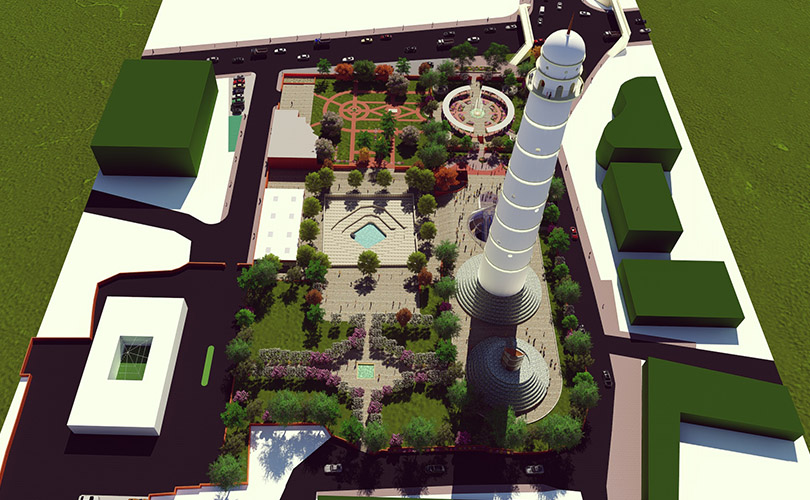
The first debate was about what the new tower should be called. The authorities have officially titled the project ‘Historic Dharahara Reconstruction’.
But, activists say it is not the ‘reconstruction’ of the Dharahara that people knew, rather a construction of a completely new building that today stands next to the remains of earthquake-hit Dharahara.
“I do not think it is Dharahara, it is not. It is a view tower,” says heritage activist Alok Siddhi Tuladhar, “It is a project of our PM; it is just not what we want. The Dharahara was already called ‘Bhimsen folly’ after it was built, because it was against the architectural nature of Kathmandu and even Nepal, and now we are repeating the same mistake.”
The founder and treasurer of Bhimsen Thapa Memorial Foundation, Sushil Bickram Thapa, also says, “It is not Dharahara. It is Oli tower.” Meanwhile, many are also calling it a jhilke (flashy) tower.
Misplaced priorities
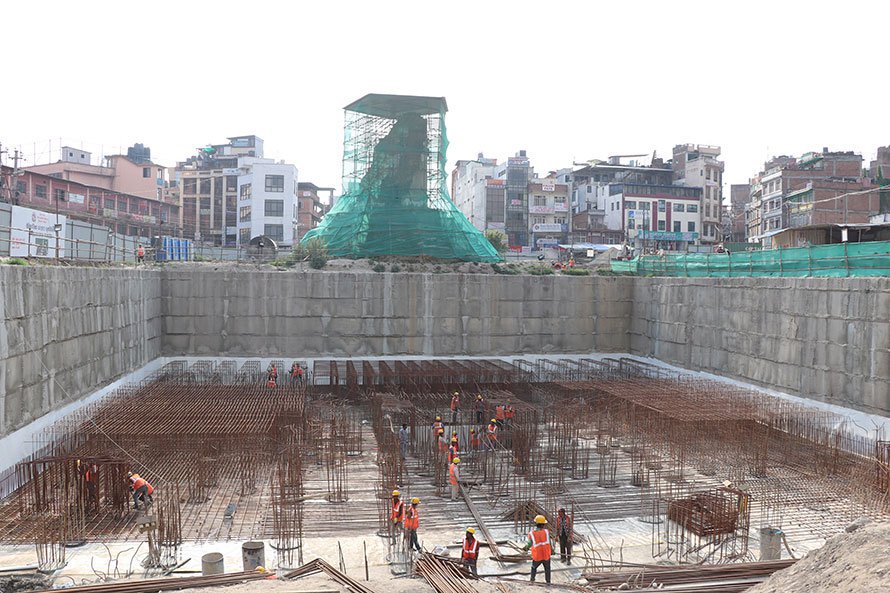
“The money used for the construction of the tower could have been used for other things, reconstruction of other sites, or like buying vaccines now,” says heritage activist Alok Sidhhi Tuladhar.
Likewise, another heritage activist Yadav Lal Kayastha says, the priorities should have shifted to the reconstruction of Kumari Chhen that is visited and appreciated by many while it also has cultural and historic importance.
“When it was being envisioned, didn’t the authorities even consider its long-term impact and thought about the heritage of its conservation,” questions Kayastha.
According to activist Alina Tamrakar, there are conditions and guidelines about replicating historic monuments. “In the case of Dharahara and the new tower, the authorities have magnified the size of the former Dharahara and commercialised the area. The new one only justifies money-making intentions.”
She says, “Remains of the Dharahara as a memorial park only would have been enough. It would have been a memory of the lives we lost and the failures of our constructions. Or, efforts could have been made to preserve the Post Office building, the first modern architectural building of Nepal.”
Agreeing to her, Tuladhar, a brain behind the Occupy Tundikhel campaign, adds, the authorities could have cleared the space and announced it as a part of Greater Tundikhel as it was before. It could have been a way to give the people the open space that they lack in the Kathmandu valley.
Now, what is the wait for?
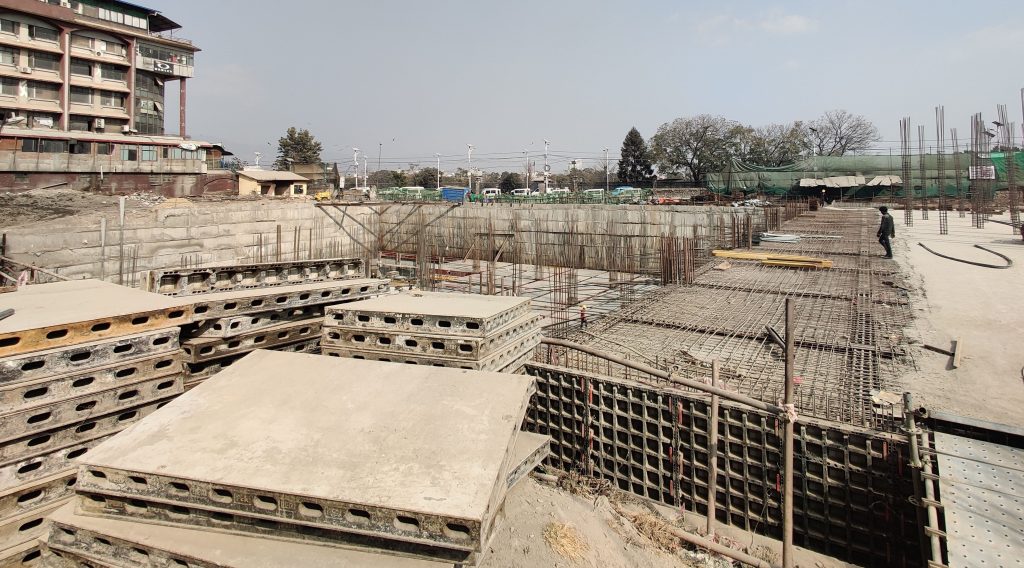
Kayastha says he frequents the site to get updates of the construction and says he does not agree with authorities on the use of concrete in the building,
“The reason the authorities give here was that all previous Dharaharas fell down in the mega earthquakes, and they wanted to strengthen the new tower with concrete,” he narrates, “But I asked them, ‘what is the durability of cement?’ The engineers and workers working there do not know.”
He adds, “The durability of concrete is only 40 to 50 years. This means the tower will not survive the next mega-earthquake [historically experienced every 80 to 100 years], and it will fall again.”
Now, say if the country experiences another earthquake now, and this “new Dharahara” crumbles again, Kayastha questions, “Who will take the responsibility? It is in the heart of the city that is densely populated, the damage this new building will cause will be even more.”
Likewise, Tuladhar says he strongly believes the tower does not suit or complement the soil of Kathmandu and has only become an eyesore.
Then, the biggest question activists want to ask authorities is: where is the view that the visitors can view from the view tower?
“After the completion of this project, what are we looking forward to? To climb the tower for the view, they say,” Kayastha says, “But, the view of what, I ask. The concrete jungle of Kathmandu has become polluted. There is no view. And there is no need for a view tower.”



